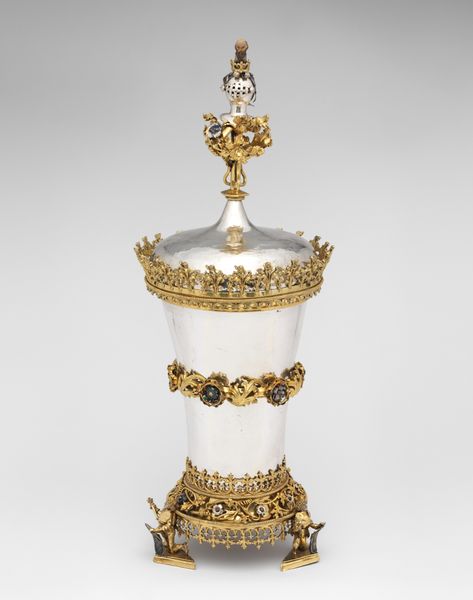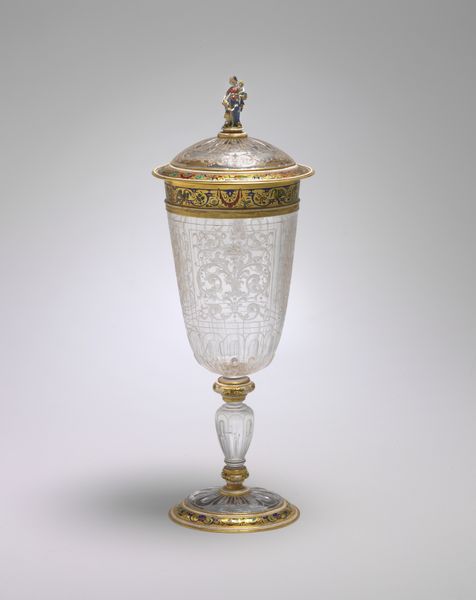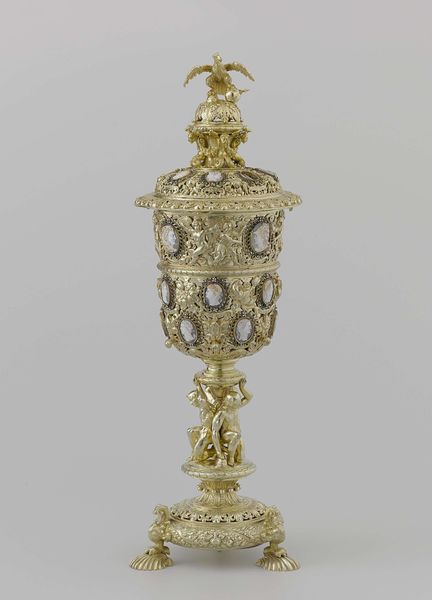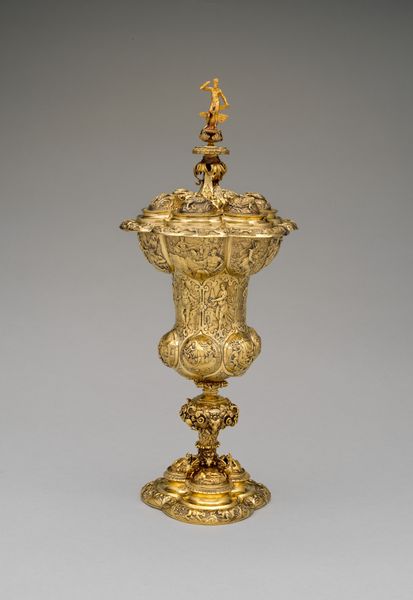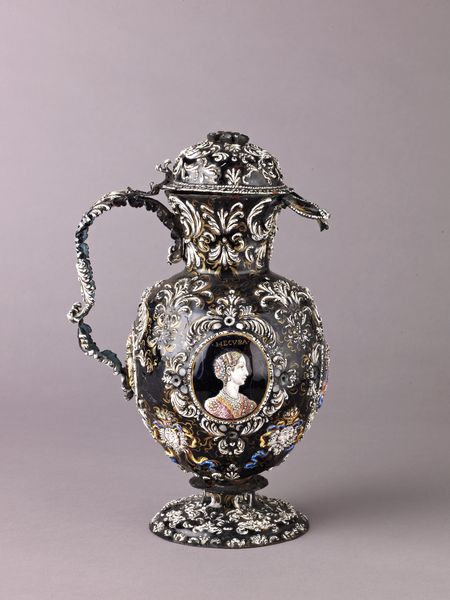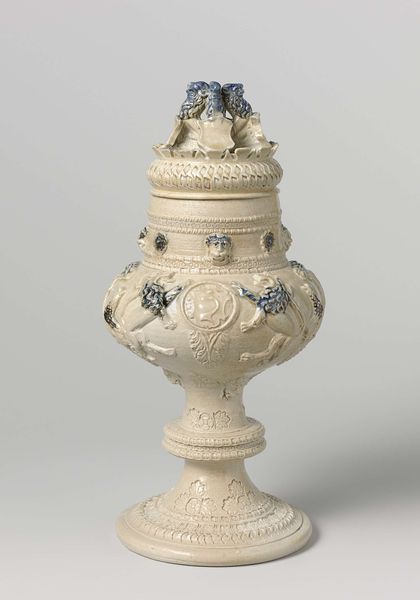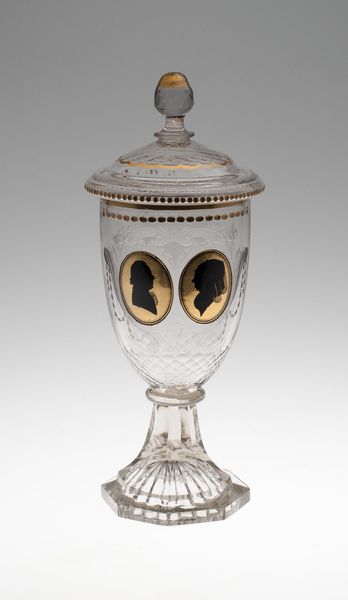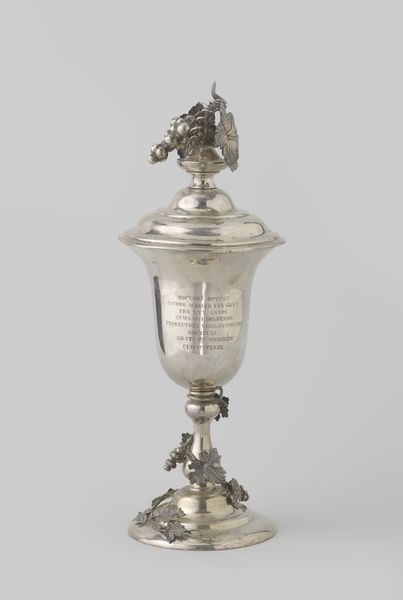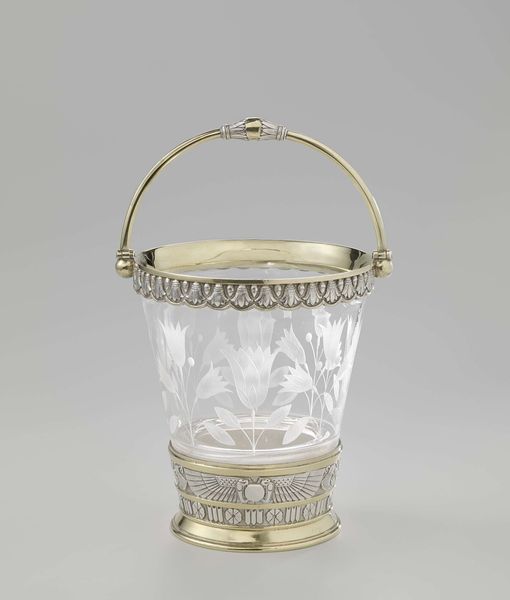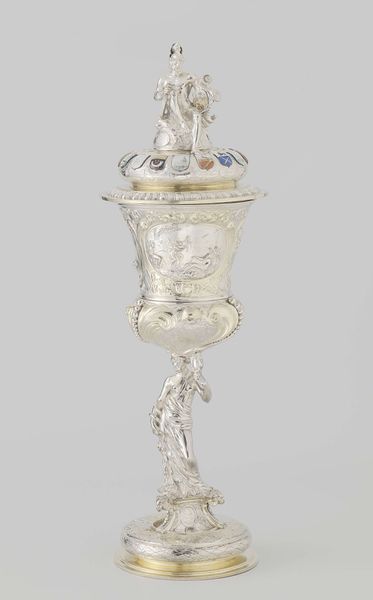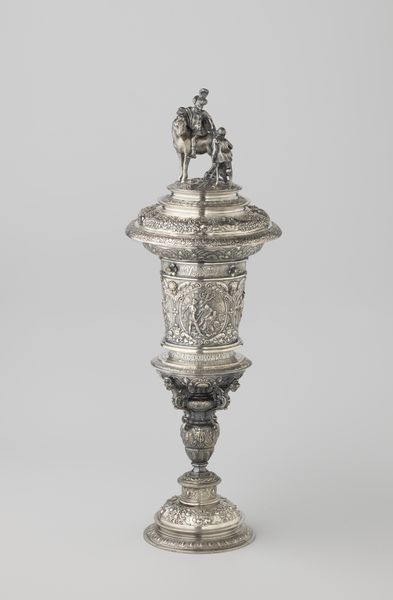
silver, metal, metalwork-silver
#
silver
#
metal
#
11_renaissance
#
metalwork-silver
#
decorative-art
Dimensions: Overall: H: 14 3/8 in. (36.5 cm)
Copyright: Public Domain
Editor: Here we have Hans Greiff’s “Covered Beaker,” made of silver around 1470. It’s incredibly ornate. It’s giving me serious medieval banquet vibes, all gleaming metal and elaborate detail. What can you tell me about this piece? Curator: This beaker speaks volumes about status and power in the Renaissance. It’s not merely decorative. Consider who would commission such a piece and in what context it would be used. Aristocrats used objects like this to demonstrate not only wealth but also refined taste, which were important for solidifying social position and negotiating power dynamics within courtly society. Editor: So, it's a symbol of social standing? I guess that makes sense, but the sheer extravagance of it is kind of overwhelming. Curator: Exactly. The materials and craftsmanship signify economic dominance, but the intricate details often carry symbolic weight tied to cultural values. We must also ask whose labor created this object? Consider the inequalities inherent in its creation. Where are the voices of the artisans who dedicated themselves to this craft? How were these craftspeople organized, and what does that say about the society it was made in? Editor: That's a point I hadn't considered. The artisans’ stories are usually left out. Are there any hidden meanings within those intricate details? Curator: Potentially. The imagery might relate to the patron’s family history, political allegiances, or philosophical beliefs. Think of it as a carefully constructed performance of identity. Also, given the period, understanding the political and religious climate helps unpack the visual language deployed. How might the Reformation, or early humanistic thought, have influenced this artisan or the original patron? Editor: That makes me think about the role of objects in reinforcing societal structures and the narratives they promote. I'm definitely looking at this beaker differently now. Curator: Precisely. Questioning those structures and narratives, making visible the previously invisible – that's where art history can become a truly potent force.
Comments
No comments
Be the first to comment and join the conversation on the ultimate creative platform.
